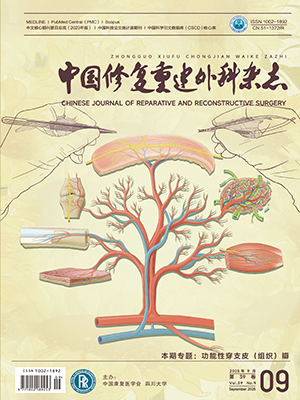OBJECTIVE To study the clinical effect of chitosan on prevention of elbow adhesion after elbow arthrolysis. METHODS Twenty six patients with elbow ankylosis were performed elbow arthrolysis, which divided into two groups, in chitosan group, 12 patients were injected 2% chitosan into the elbow joint cavity, and no chitosan used in the other 14 patients as control group. The average range of extension and flexion of elbow joint was detected to evaluate the clinical results. RESULTS All patients were followed up 8 to 51 months, averaged 24 months. In the chitosan group, the average range of extension and flexion of elbow joint was restored to 92.9 degrees +/- 20.9 degrees, with an average increase of 55.0 degrees +/- 15.9 degrees compared with preoperation. In the control group, the average range of extension and flexion of elbow joint was restored to 75.4 degrees +/- 17.5 degrees, with an average increase of 38.2 degrees +/- 11.9 degrees. The outcome showed significant difference between the chitosan group and the control group (P lt; 0.01). CONCLUSION Chitosan can prevent or reduce elbow adhesion after elbow arthrolysis.
Citation: H OU Chun lin,CH EN Ai min,ZH AN G Wei,et al.. CL INICAL STUDY ON CHITOSAN FOR PREVENTION OF EL BOW ADHESION. Chinese Journal of Reparative and Reconstructive Surgery, 2000, 14(2): 80-82. doi: Copy
Copyright © the editorial department of Chinese Journal of Reparative and Reconstructive Surgery of West China Medical Publisher. All rights reserved




